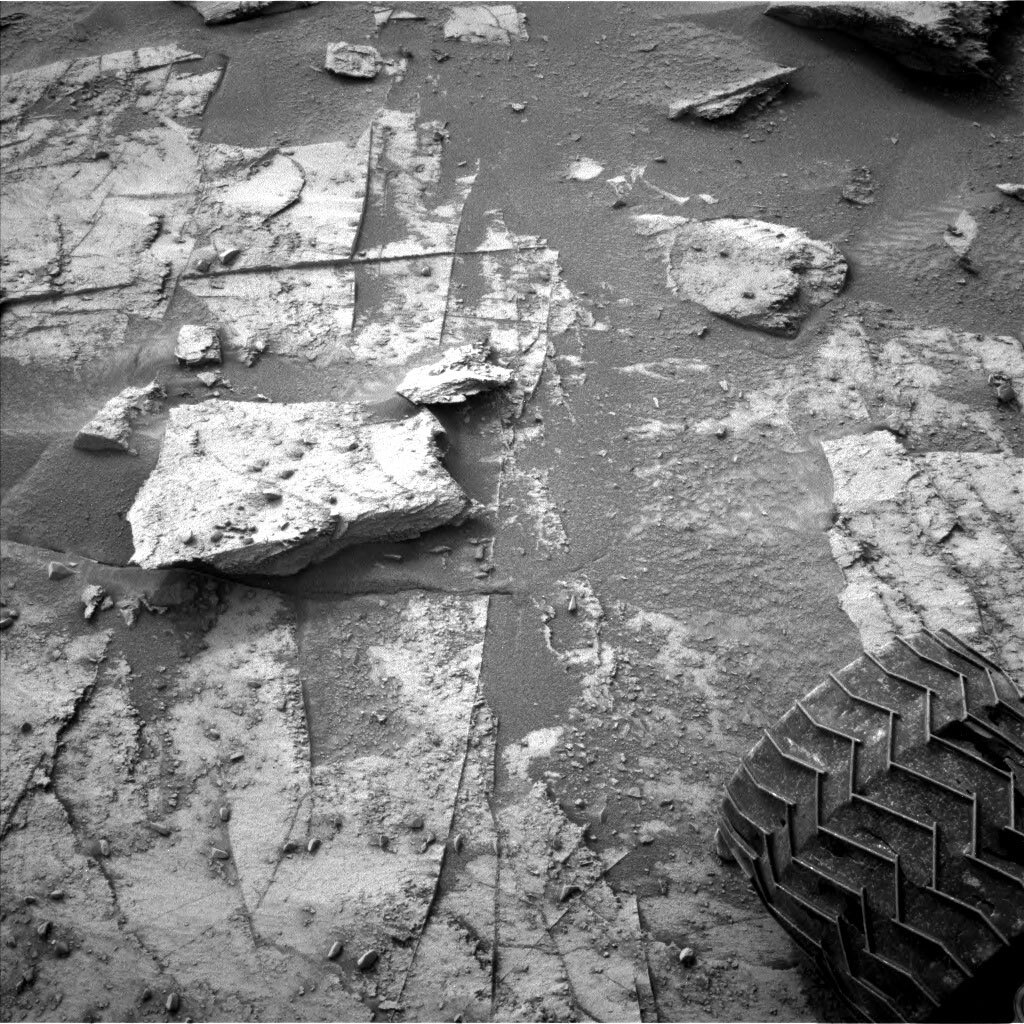3 min read

We are back into our planning routine after the Christmas break. In fact, today was the third plan in the new year, and the third plan that Curiosity executes within the Roraima quadrant my colleague introduced a few days ago. While we are getting used to new sounds of our names, we are marvelling at the landscape in front of us, which is very diverse, both in the rover workspace and in the walls around us. It’s a feast for our stratigraphers (those who research the succession in which rocks were deposited and deduce the geologic history of the area from this). We are all looking forward to the story they will piece together when they’ve had a bit of time to think!
Planning is all about getting the data, and here are three new sols to do so. Unfortunately, the diversity of the landscape means one of the rover wheels is parked right on top of a rock, and that’s not a safe situation for the use of the arm. This is because the rover could shift if the rock suddenly moved or broke under the wheel while the arm is out and close to a target. The engineers are working diligently to keep all our instruments safe, so they called a weekend with no contact science. It happens occasionally, and except for that little rock squeezed under the rover wheel, all is happy and safe on Mars and on Earth. The team quickly turned to the instruments that do not need arm use to add a few more of those observations. It’s all about getting all the data we can at this interesting location.
So, here is what’s in the plan: True to the fact that the walls around us have a lot of interesting layers and features, we have two large Mastcam mosaics, target ‘Maringama’ and ‘Prow,’ to get higher resolution colour images for assessment by our stratigraphers (and all others, too, of course). ChemCam also looks at the sedimentological structures in the walls at even higher resolution doing two long distance imaging investigations on target ‘Mirador’ and ‘Ptari.’ But, of course, there also is a desire for understanding the chemistry, and therefore ChemCam has two LIBS investigations on the targets ‘Araopan’ and ‘Arai,’ which Mastcam will also document with an image each, and an AEGIS observation after the drive. Mineralogy will be investigated through a Mastcam multispectral observation on the target ‘Indio.’
Curiosity has a few other items on her to-do list over the weekend. CheMin is investigating a sample we drilled a while back and that has been kept in the sample cell since: Zechstein. If you now wonder when and where Zechstein was, look here. There is a drive and a routine MARDI image afterwards. DAN looks for water and chlorite in the subsurface, and it’s time for MAHLI wheel imaging, for which the rover will bump slightly to get off the rock and then start its cadence to look at all the wheels. Of course, the weather will be observed through temperature, pressure and atmospheric imaging observations, which include a dust devil movie. Looks like Curiosity has a busy weekend ahead, while I get to put my feet up on my sofa and stare out the window watching the rain that’s in the weather forecast here in England.
Written by Susanne Schwenzer, Planetary Geologist at The Open University







